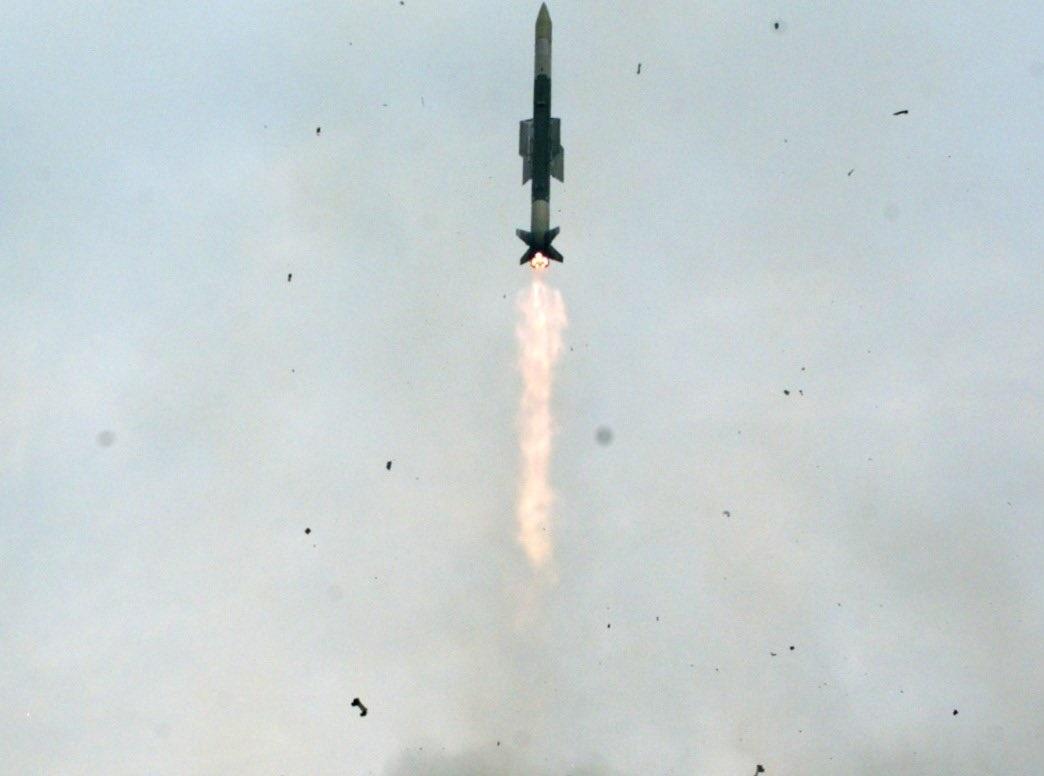Vertical Launch Short Range Surface to Air Missile (VL-SRSAM) was successfully flight-tested by the Defence Research & Development Organisation (DRDO) and the Indian Navy from an Indian Naval Ship at Integrated Test Range (ITR), Chandipur off the coast of Odisha on June 24, 2022. The launch of the system was conducted against a high-speed aerial target mimicking aircraft, which was successfully engaged. The flight path of the vehicle along with health parameters was monitored using several tracking instruments deployed by ITR, Chandipur. The test launch was monitored by senior officials from DRDO & the Indian Navy. The VL-SRSAM, a ship-borne weapon system, is meant for neutralising various aerial threats at close ranges including sea-skimming targets.
Raksha Mantri Shri Rajnath Singh stated, “The system has added an armour that will further enhance the defence capability of Indian Naval ships against aerial threats.”
Chief of the Naval Staff Admiral R Hari Kumar said, “That the development of this indigenous missile system will further strengthen the defensive capabilities of the Indian Navy.”
Secretary, Department of Defence R&D & Chairman DRDO Dr G Satheesh Reddy said, “The test has proved the integration of indigenous weapon systems onboard Indian Naval Ships.”

The Vertical Launch – Short Range Surface to Air Missile, or VL-SRSAM is a quick reaction surface-to-air missile developed by Defence Research and Development Organisation (DRDO). During the mid-course flight, the missile uses a fibre-optic gyroscope-based inertial guidance mechanism while the terminal phase uses active radar homing. With the lock-on before launch (LOBL) and lock-on after launch (LOAL) capability, the missile receives a mid-course update via datalink. VL-SRSAM intended to replace the older Barak 1 surface-to-air missile system onboard Indian Navy warships. It will also be used as a short-range air defence system for Indian Air Force.
VL-SRSAM is based on Astra Mark 1 air-to-air missile with four short-span long-chord cruciform wings that provide aerodynamic stability. It also includes additional jet vane-driven thrust vector control to enable quick reaction time on vertical launch and smokeless exhaust. VL-SRSAM was conceived for the area and point-defence role to save naval platforms. Each Vertical Launch System (VLS) can hold forty missiles in a twin quad-pack canister configuration carrying eight missiles each for hot launch that can be installed in an arrangement of multiple launch systems based on the availability of space on the ship. The missile is for neutralizing various aerial threats at medium and close ranges, including fighter aircraft and sea-skimming anti-ship missiles.














